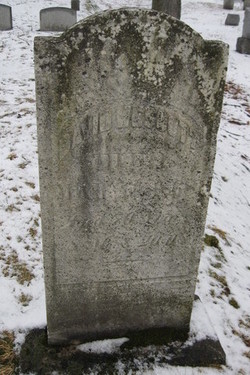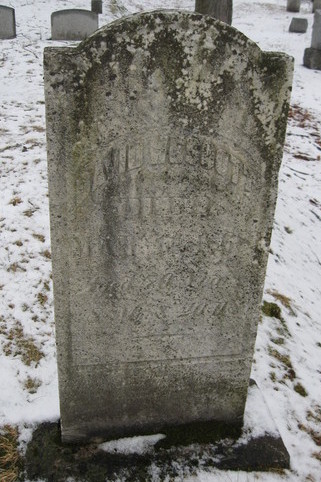29 August 1950, Barre, Orleans County, NY Census
WESTCOTT, DAVID 53 M NY FARMER 1195
CELINDA 50 F CONN
HARVEY 27 M
MARTHA 26 F
JULIA 24 F
JOHN 23 M
CALVIN 21 M
GEORGE 19 M
BETSEY 17 F
S Cole 52
Polly Cole 54
Lucy Cole 18
6 August 1860, Albion, Orleans County, NY Census
David Wescott 63
Celinda Wescott 61
Harvey Wescott 39
Calvin B Wescott 31
Martha A Wescott 30
Julia A Wescott 35
Esther A Brown 32
Charles Wilbur Brown
Francis C Brown 8
Lewis Brown 8
********************************************
ORLEANS COUNTY NEW YORK 1895
Early Orleans County History...
"On Lake Ontario, between Monroe and Niagara counties, and north of Genesee, lies Orleans County, with its compact area of 405 square miles. Its surface is undulating in the form of three distinct plateaus extending from the east to the west. The plateaus between are generally level, or partake of the nature of the ridges.
The middle ridge, which is about 100 to 300 feet wide on the top, has a peculiar interest to the student of the history of the county, for on it was, from time immemorial, the great trail or road through the country. The Indians knew of it and used it in their journeys to this, one of their great hunting grounds. When the whites drifted into the region, it was by this ridge road that they came and along it they established their first settlements. In 1792 it was the principal route into Canada, and the road on which cattle and supplies were sent to the soldiers at Niagara during the War of I812, and even earlier. And when the Holland Land Company, of which more later, built the first road from Batavia to Buffalo, it was but by improving the ancient "Ridge Road."
There is a tradition that a Canadian settled in the region in 1792. Settlement proceeded at a rather slow pace until 1809, when the Ridge Road was thrown open to travel. The Holland Company had sold between 1802 and 1808, inclusive, nearly 3,700 parcels of land, but it would seem that practically all of these had never been occupied until the latter date. The influx of settlers was great from 1809 until the breaking out of the War of 1812. When the British captured Fort Niagara in 1813 many of the newcomers in the section returned to their former homes, but soon came back after peace had been declared. The tide of immigration rose. The most of the settlements were in the more northerly parts, still clinging to the Ridge Road. But the Erie Canal soon opened a more attractive path and settlement moved to the south.
The county area was one fitted to agriculture, and when once the fever of land speculation had abated, and the timber of the section had been removed enough to open wide areas, farming became the great industry.
This section of Orleans County, was a part of the large Genesee County (the whole of western New York) until November 11, 1824. In that year Orleans was set off as a separate entity, the county seat was soon removed to Albion on the Erie Canal in the central part of the county. A fine set of buildings was erected in a park in Albion, and the choice of he village for so great an honor proved wise.
The Holland Company as a great factor in the settlement and growth of the county. A large section was in the possession of the Holland Company. This was a group of Hollanders who, through an American agent, purchased from Robert Morris 3,600,000 acres in 1792-93. The company had their land surveyed, offered all manner of inducements to settlers, and assisted by building roads, establishing inns, convenient land offices and low initial payments by prospective settlers. The latter mentioned aid proved to be a boomerang, for when full payment was in the end insisted upon, there were riots by malcontents and ne'er-do-wells, and the company found it expedient to sell out its remaining lands and retire from the field."
Source: Early Orleans County History
http://www.hopefarm.com/orleanny.htm
29 August 1950, Barre, Orleans County, NY Census
WESTCOTT, DAVID 53 M NY FARMER 1195
CELINDA 50 F CONN
HARVEY 27 M
MARTHA 26 F
JULIA 24 F
JOHN 23 M
CALVIN 21 M
GEORGE 19 M
BETSEY 17 F
S Cole 52
Polly Cole 54
Lucy Cole 18
6 August 1860, Albion, Orleans County, NY Census
David Wescott 63
Celinda Wescott 61
Harvey Wescott 39
Calvin B Wescott 31
Martha A Wescott 30
Julia A Wescott 35
Esther A Brown 32
Charles Wilbur Brown
Francis C Brown 8
Lewis Brown 8
********************************************
ORLEANS COUNTY NEW YORK 1895
Early Orleans County History...
"On Lake Ontario, between Monroe and Niagara counties, and north of Genesee, lies Orleans County, with its compact area of 405 square miles. Its surface is undulating in the form of three distinct plateaus extending from the east to the west. The plateaus between are generally level, or partake of the nature of the ridges.
The middle ridge, which is about 100 to 300 feet wide on the top, has a peculiar interest to the student of the history of the county, for on it was, from time immemorial, the great trail or road through the country. The Indians knew of it and used it in their journeys to this, one of their great hunting grounds. When the whites drifted into the region, it was by this ridge road that they came and along it they established their first settlements. In 1792 it was the principal route into Canada, and the road on which cattle and supplies were sent to the soldiers at Niagara during the War of I812, and even earlier. And when the Holland Land Company, of which more later, built the first road from Batavia to Buffalo, it was but by improving the ancient "Ridge Road."
There is a tradition that a Canadian settled in the region in 1792. Settlement proceeded at a rather slow pace until 1809, when the Ridge Road was thrown open to travel. The Holland Company had sold between 1802 and 1808, inclusive, nearly 3,700 parcels of land, but it would seem that practically all of these had never been occupied until the latter date. The influx of settlers was great from 1809 until the breaking out of the War of 1812. When the British captured Fort Niagara in 1813 many of the newcomers in the section returned to their former homes, but soon came back after peace had been declared. The tide of immigration rose. The most of the settlements were in the more northerly parts, still clinging to the Ridge Road. But the Erie Canal soon opened a more attractive path and settlement moved to the south.
The county area was one fitted to agriculture, and when once the fever of land speculation had abated, and the timber of the section had been removed enough to open wide areas, farming became the great industry.
This section of Orleans County, was a part of the large Genesee County (the whole of western New York) until November 11, 1824. In that year Orleans was set off as a separate entity, the county seat was soon removed to Albion on the Erie Canal in the central part of the county. A fine set of buildings was erected in a park in Albion, and the choice of he village for so great an honor proved wise.
The Holland Company as a great factor in the settlement and growth of the county. A large section was in the possession of the Holland Company. This was a group of Hollanders who, through an American agent, purchased from Robert Morris 3,600,000 acres in 1792-93. The company had their land surveyed, offered all manner of inducements to settlers, and assisted by building roads, establishing inns, convenient land offices and low initial payments by prospective settlers. The latter mentioned aid proved to be a boomerang, for when full payment was in the end insisted upon, there were riots by malcontents and ne'er-do-wells, and the company found it expedient to sell out its remaining lands and retire from the field."
Source: Early Orleans County History
http://www.hopefarm.com/orleanny.htm
















